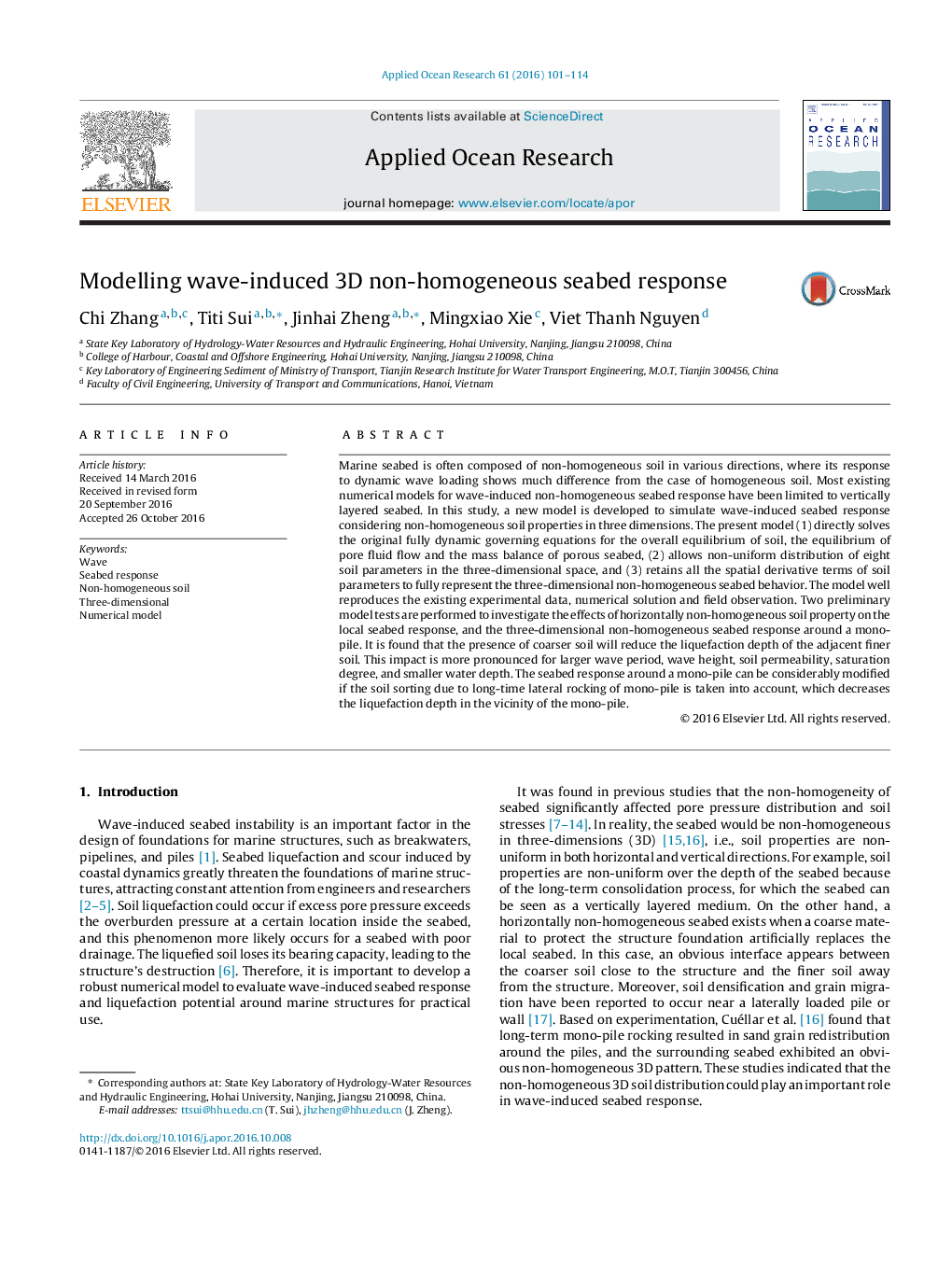| Article ID | Journal | Published Year | Pages | File Type |
|---|---|---|---|---|
| 5473333 | Applied Ocean Research | 2016 | 14 Pages |
Abstract
Marine seabed is often composed of non-homogeneous soil in various directions, where its response to dynamic wave loading shows much difference from the case of homogeneous soil. Most existing numerical models for wave-induced non-homogeneous seabed response have been limited to vertically layered seabed. In this study, a new model is developed to simulate wave-induced seabed response considering non-homogeneous soil properties in three dimensions. The present model (1) directly solves the original fully dynamic governing equations for the overall equilibrium of soil, the equilibrium of pore fluid flow and the mass balance of porous seabed, (2) allows non-uniform distribution of eight soil parameters in the three-dimensional space, and (3) retains all the spatial derivative terms of soil parameters to fully represent the three-dimensional non-homogeneous seabed behavior. The model well reproduces the existing experimental data, numerical solution and field observation. Two preliminary model tests are performed to investigate the effects of horizontally non-homogeneous soil property on the local seabed response, and the three-dimensional non-homogeneous seabed response around a mono-pile. It is found that the presence of coarser soil will reduce the liquefaction depth of the adjacent finer soil. This impact is more pronounced for larger wave period, wave height, soil permeability, saturation degree, and smaller water depth. The seabed response around a mono-pile can be considerably modified if the soil sorting due to long-time lateral rocking of mono-pile is taken into account, which decreases the liquefaction depth in the vicinity of the mono-pile.
Related Topics
Physical Sciences and Engineering
Engineering
Ocean Engineering
Authors
Chi Zhang, Titi Sui, Jinhai Zheng, Mingxiao Xie, Viet Thanh Nguyen,
